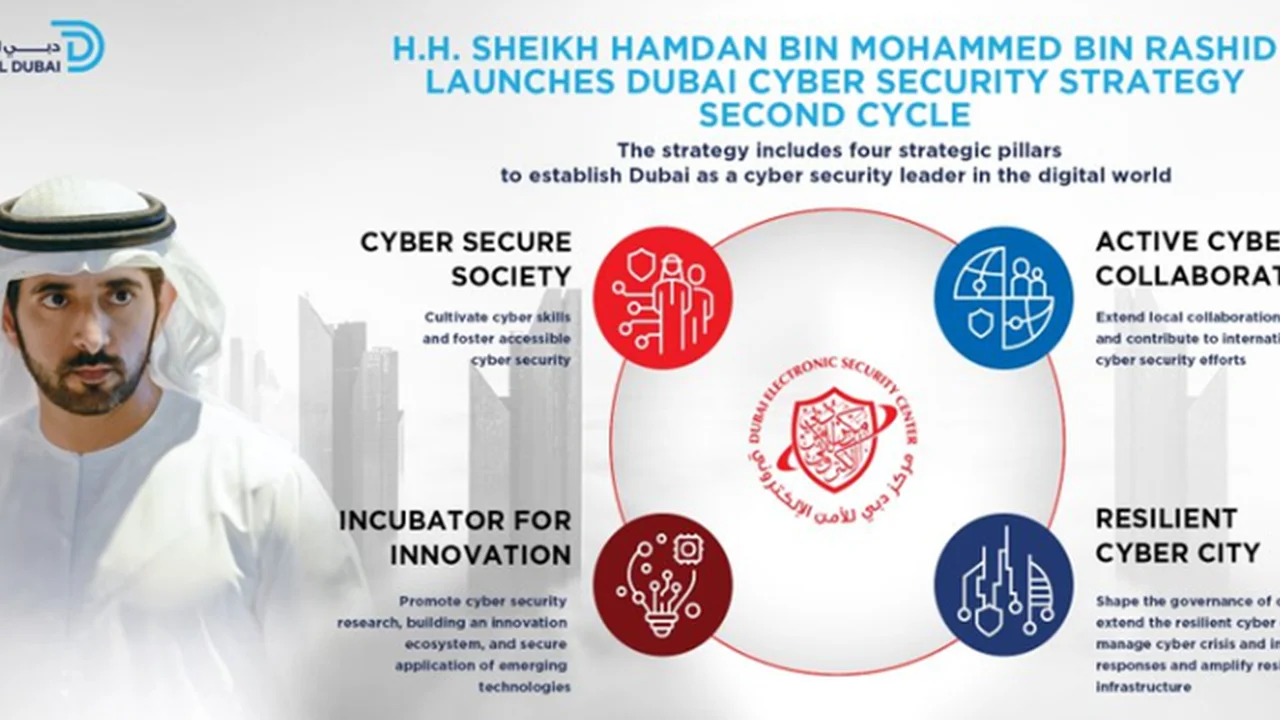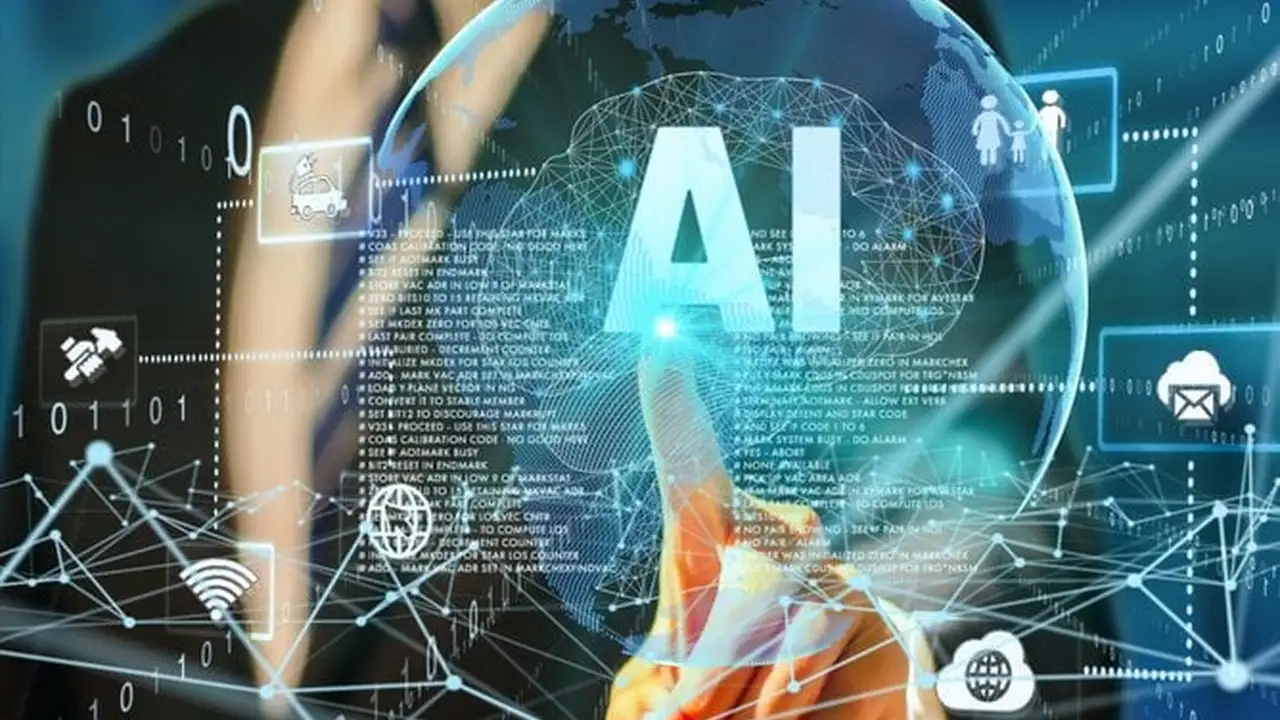AI and Cybersecurity_ Protecting UAE Cities

The Evolving Landscape of Smart City Security Threats
Smart cities, with their interconnected infrastructure and reliance on data, present a tempting target for cybercriminals. As urban centers become increasingly reliant on artificial intelligence (AI) and the Internet of Things (IoT), the attack surface expands exponentially. From compromised traffic management systems to hacked surveillance cameras, the potential consequences of a successful cyberattack are far-reaching and devastating.
Traditional security measures are often insufficient to address the unique challenges posed by smart city environments. The sheer volume of data generated by IoT devices, coupled with the complexity of interconnected systems, necessitates a more proactive and intelligent approach to cybersecurity. This is where AI steps in, offering a powerful arsenal of tools and techniques to defend against evolving threats.
AI Powered Cybersecurity Solutions for Smart Cities
AI is transforming the cybersecurity landscape, enabling smart cities to detect, prevent, and respond to threats more effectively. Here are some key areas where AI is making a significant impact:
- Threat Detection: AI algorithms can analyze vast amounts of data from various sources, including network traffic, system logs, and security alerts, to identify anomalies and suspicious patterns that may indicate a cyberattack. Machine learning models can be trained to recognize known attack signatures and predict future threats based on historical data.
- Incident Response: AI can automate incident response processes, enabling security teams to quickly contain and mitigate the impact of a cyberattack. AI-powered tools can automatically isolate infected systems, block malicious traffic, and initiate recovery procedures.
- Vulnerability Management: AI can scan networks and systems for vulnerabilities, prioritize remediation efforts, and automate patching processes. This helps to reduce the attack surface and minimize the risk of exploitation.
- Access Control: AI can enhance access control mechanisms by using biometric authentication, behavioral analysis, and contextual information to verify user identities and prevent unauthorized access to sensitive data.
- Security Awareness Training: AI can personalize security awareness training programs to educate employees about the latest threats and best practices for cybersecurity. This helps to reduce the risk of human error, which is a leading cause of security breaches.
Case Study AI Driven Cybersecurity in Action
Let's consider a hypothetical scenario where a smart city is implementing an AI-powered cybersecurity solution to protect its critical infrastructure. The solution consists of several key components:
- AI-powered intrusion detection system (IDS): This system analyzes network traffic in real-time to identify suspicious activity. It uses machine learning algorithms to learn the normal behavior of the network and flag any deviations from this baseline.
- AI-powered security information and event management (SIEM) system: This system collects and analyzes security data from various sources, including network devices, servers, and applications. It uses AI to correlate events and identify potential security incidents.
- AI-powered vulnerability scanner: This tool automatically scans the city's network and systems for vulnerabilities. It prioritizes remediation efforts based on the severity of the vulnerability and the potential impact of an exploit.
One day, the AI-powered IDS detects a suspicious pattern of network traffic originating from a known malicious IP address. The system automatically alerts the security team and provides them with detailed information about the potential threat. The security team investigates the incident and determines that the traffic is targeting a critical control system that manages the city's power grid.
Using the information provided by the AI-powered SIEM system, the security team is able to quickly identify the affected system and isolate it from the rest of the network. They then use the AI-powered vulnerability scanner to identify any vulnerabilities that may have been exploited. The scanner identifies a previously unknown vulnerability in the control system software. The security team immediately patches the vulnerability and restores the system to normal operation.
Thanks to the AI-powered cybersecurity solution, the smart city was able to prevent a potentially catastrophic cyberattack that could have disrupted power service to thousands of residents.
Specific Product Recommendations for Smart City Cybersecurity
Selecting the right cybersecurity solutions is crucial for the success of any smart city initiative. Here are some specific product recommendations, focusing on real-world examples and detailed specifications:
Darktrace Antigena
Product Overview: Darktrace Antigena is an AI-powered autonomous response technology that detects and neutralizes cyber threats in real time. It uses unsupervised machine learning to learn the normal behavior of a network and automatically respond to anomalies without human intervention.
Use Cases:
- Protecting critical infrastructure from cyberattacks
- Responding to insider threats
- Preventing data breaches
- Securing IoT devices
Key Features:
- Autonomous threat response
- Real-time threat detection
- Unsupervised machine learning
- Behavioral anomaly detection
- Integration with existing security tools
Detailed Information: Antigena learns the "pattern of life" for every device, user, and connection on a network. When it detects anomalous activity, it can take surgical actions to contain the threat, such as slowing down connections, blocking traffic, or isolating devices. It does this without disrupting normal business operations. The system continuously learns and adapts to the evolving threat landscape.
Pricing: Darktrace pricing is customized based on the size and complexity of the network being protected. Contact Darktrace directly for a quote.
IBM QRadar
Product Overview: IBM QRadar is a security information and event management (SIEM) platform that provides real-time threat detection, incident response, and compliance reporting. It collects and analyzes security data from various sources, including network devices, servers, and applications, to identify and prioritize potential security threats.
Use Cases:
- Centralized security monitoring
- Threat intelligence integration
- Incident response automation
- Compliance reporting
Key Features:
- Real-time threat detection
- Security intelligence integration
- Incident response automation
- Log management
- Compliance reporting
Detailed Information: QRadar leverages AI and machine learning to identify and prioritize security threats. It uses a combination of rule-based detection, behavioral analytics, and threat intelligence feeds to detect a wide range of attacks. The platform also provides incident response automation capabilities, allowing security teams to quickly contain and mitigate the impact of security breaches.
Pricing: IBM QRadar pricing is based on the number of events per second (EPS) processed by the platform. Contact IBM directly for a quote.
CylancePROTECT
Product Overview: CylancePROTECT is an AI-powered endpoint protection platform that prevents malware, ransomware, and other advanced threats from executing on endpoints. It uses machine learning to analyze the characteristics of files and identify malicious code before it can cause harm.
Use Cases:
- Endpoint protection
- Ransomware prevention
- Advanced threat protection
- Application control
Key Features:
- AI-powered threat prevention
- Behavioral analysis
- Application control
- Memory protection
- Script control
Detailed Information: CylancePROTECT uses a pre-execution approach to threat prevention, meaning that it analyzes files before they are executed. This allows it to block malware and ransomware even if it has never been seen before. The platform also includes application control capabilities, allowing administrators to restrict which applications can run on endpoints.
Pricing: CylancePROTECT pricing is based on the number of endpoints being protected. Contact BlackBerry Cylance directly for a quote.
Comparing AI Cybersecurity Products for Smart Cities
Choosing the right AI-powered cybersecurity solution for your smart city requires careful consideration of your specific needs and requirements. Here's a comparison of the products mentioned above:
| Product | Key Strengths | Key Weaknesses | Best Suited For |
|---|---|---|---|
| Darktrace Antigena | Autonomous response, real-time threat detection, unsupervised machine learning | Can be expensive, requires significant data for accurate learning | Organizations that need automated threat response capabilities and have a large network to protect. |
| IBM QRadar | Comprehensive SIEM platform, threat intelligence integration, incident response automation | Can be complex to configure and manage, requires skilled security analysts | Organizations that need a centralized security monitoring and incident response platform. |
| CylancePROTECT | AI-powered threat prevention, pre-execution analysis, application control | Focuses primarily on endpoint protection, may require additional solutions for network security | Organizations that need to protect their endpoints from malware and ransomware. |
Ultimately, the best choice depends on your specific needs and budget. It's important to conduct a thorough evaluation of each product before making a decision.
The Role of AI in Protecting Specific Smart City Infrastructure
AI can be applied to protect various aspects of smart city infrastructure. Let's explore some examples:
Transportation Systems
AI can be used to monitor traffic patterns, detect anomalies, and prevent traffic accidents. AI-powered systems can analyze data from cameras, sensors, and other sources to identify potential hazards, such as speeding vehicles, pedestrians crossing the street, and traffic congestion. These systems can then alert drivers and traffic controllers to take appropriate action.
Furthermore, AI can be used to optimize traffic flow and reduce congestion. AI-powered traffic management systems can dynamically adjust traffic signal timings based on real-time traffic conditions. This can help to reduce travel times and improve air quality.
Energy Grids
AI can be used to monitor energy consumption, detect anomalies, and prevent power outages. AI-powered systems can analyze data from smart meters, sensors, and other sources to identify potential problems, such as overloaded circuits, equipment failures, and cyberattacks. These systems can then alert energy providers to take appropriate action.
Additionally, AI can be used to optimize energy distribution and reduce energy waste. AI-powered energy management systems can dynamically adjust energy supply based on real-time demand. This can help to reduce energy costs and improve grid reliability.
Water Supply Systems
AI can be used to monitor water quality, detect leaks, and prevent water contamination. AI-powered systems can analyze data from sensors, meters, and other sources to identify potential problems, such as chemical spills, pipe bursts, and water theft. These systems can then alert water authorities to take appropriate action.
Moreover, AI can be used to optimize water distribution and reduce water waste. AI-powered water management systems can dynamically adjust water pressure based on real-time demand. This can help to reduce water leaks and improve water conservation.
Public Safety
AI can be used to enhance public safety by improving crime prevention, emergency response, and disaster management. AI-powered surveillance systems can analyze video footage to identify suspicious behavior and alert law enforcement. AI-powered emergency response systems can dispatch first responders to the scene of an accident or crime more quickly and efficiently. AI-powered disaster management systems can predict the impact of natural disasters and help to coordinate evacuation efforts.
Challenges and Considerations for Implementing AI Cybersecurity
While AI offers significant benefits for smart city cybersecurity, there are also several challenges and considerations that need to be addressed:
- Data Privacy: AI systems require access to large amounts of data, which may raise concerns about data privacy. It's important to implement robust data privacy policies and procedures to ensure that data is collected, stored, and used in a responsible manner.
- Bias: AI algorithms can be biased if they are trained on biased data. This can lead to unfair or discriminatory outcomes. It's important to carefully evaluate the data used to train AI algorithms and to mitigate any potential biases.
- Explainability: AI algorithms can be difficult to understand and explain. This can make it difficult to trust the decisions made by AI systems. It's important to develop AI algorithms that are more transparent and explainable.
- Skills Gap: Implementing and managing AI cybersecurity solutions requires specialized skills. There is a shortage of skilled cybersecurity professionals, which can make it difficult for smart cities to adopt AI-powered security measures.
- Cost: AI cybersecurity solutions can be expensive. Smart cities need to carefully consider the costs and benefits of adopting AI-powered security measures.
The Future of AI and Cybersecurity in Smart Cities
The future of AI and cybersecurity in smart cities is bright. As AI technology continues to evolve, it will become even more powerful and effective at protecting urban centers from cyber threats. We can expect to see more sophisticated AI-powered threat detection systems, automated incident response capabilities, and proactive vulnerability management tools.
Furthermore, AI will play an increasingly important role in securing the growing number of IoT devices in smart cities. AI-powered security solutions will be able to automatically identify and mitigate vulnerabilities in IoT devices, preventing them from being exploited by cybercriminals.
However, it's important to remember that AI is not a silver bullet. It's just one tool in the cybersecurity arsenal. Smart cities need to adopt a comprehensive cybersecurity strategy that includes a combination of AI-powered solutions, traditional security measures, and human expertise.
Building a Resilient Smart City Ecosystem
Creating a truly resilient smart city requires a holistic approach to cybersecurity. This involves not only implementing advanced technologies like AI but also fostering a culture of security awareness and collaboration across all stakeholders. Here are some key steps to consider:
- Develop a Comprehensive Cybersecurity Strategy: This strategy should outline the city's cybersecurity goals, objectives, and priorities. It should also define the roles and responsibilities of different stakeholders and establish clear procedures for incident response and recovery.
- Invest in Security Awareness Training: Educate employees and citizens about the latest threats and best practices for cybersecurity. This will help to reduce the risk of human error, which is a leading cause of security breaches.
- Promote Collaboration and Information Sharing: Encourage collaboration and information sharing between government agencies, private sector organizations, and academic institutions. This will help to improve the city's overall cybersecurity posture.
- Establish a Security Operations Center (SOC): A SOC is a centralized facility that monitors and manages the city's cybersecurity infrastructure. It provides real-time threat detection, incident response, and vulnerability management capabilities.
- Implement a Zero Trust Architecture: A Zero Trust architecture assumes that all users and devices are untrusted and requires them to be authenticated and authorized before they can access sensitive data or resources. This helps to prevent unauthorized access and lateral movement within the network.
- Regularly Audit and Assess Security Controls: Conduct regular audits and assessments of security controls to identify vulnerabilities and ensure that they are effective.
- Stay Up-to-Date on the Latest Threats: Continuously monitor the threat landscape and adapt security measures to address emerging threats.
By taking these steps, smart cities can build a resilient cybersecurity ecosystem that protects their critical infrastructure and ensures the safety and security of their citizens.
AI and the Human Element in Smart City Security
While AI brings automation and speed to cybersecurity, the human element remains crucial. AI systems are tools that augment human capabilities, not replace them entirely. Security analysts, incident responders, and security architects are still needed to interpret AI-driven insights, make critical decisions, and adapt strategies to evolving threats.
The ideal scenario is a symbiotic relationship where AI handles repetitive tasks and provides data-driven insights, while humans focus on complex problem-solving, strategic planning, and ethical considerations. This collaboration allows for a more effective and adaptable cybersecurity posture.
Ethical Considerations for AI in Smart City Security
The use of AI in smart city security raises several ethical considerations that must be addressed. These include:
- Privacy: AI systems often require access to large amounts of personal data. It's important to ensure that this data is collected, stored, and used in a responsible manner and that privacy rights are protected.
- Bias: AI algorithms can be biased if they are trained on biased data. This can lead to unfair or discriminatory outcomes. It's important to carefully evaluate the data used to train AI algorithms and to mitigate any potential biases.
- Transparency: AI algorithms can be difficult to understand and explain. This can make it difficult to trust the decisions made by AI systems. It's important to develop AI algorithms that are more transparent and explainable.
- Accountability: It's important to establish clear lines of accountability for the decisions made by AI systems. If an AI system makes a mistake, it's important to be able to determine who is responsible and how to prevent similar mistakes from happening in the future.
- Security: AI systems themselves can be vulnerable to cyberattacks. It's important to secure AI systems to prevent them from being compromised by malicious actors.
Addressing these ethical considerations is essential for ensuring that AI is used in a responsible and beneficial way in smart city security.
The Future is Now: Embracing AI for a Safer Tomorrow
The integration of AI into smart city security is not just a futuristic concept; it's a present-day necessity. As urban environments become increasingly interconnected and reliant on technology, the need for intelligent, adaptive security solutions grows exponentially. By embracing AI and addressing the associated challenges and ethical considerations, smart cities can pave the way for a safer, more resilient, and more secure future for all.
:max_bytes(150000):strip_icc()/277019-baked-pork-chops-with-cream-of-mushroom-soup-DDMFS-beauty-4x3-BG-7505-5762b731cf30447d9cbbbbbf387beafa.jpg)





